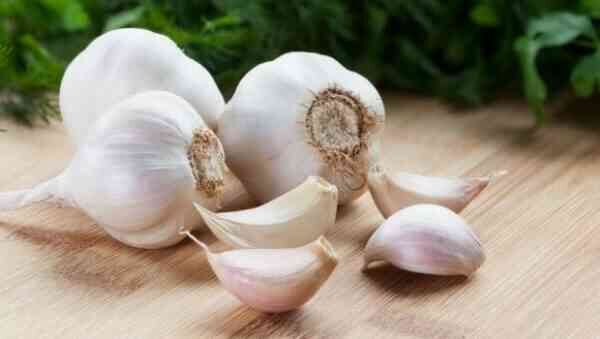Garlic, as well as its beneficial properties, has been known to mankind since ancient times, it has been actively used in cooking for hundreds more and thousands of years ago. People have long paid attention to its features, and came to the conclusion that a plant that copes so well with diseases must also have other powers, and therefore garlic was awarded the «skill» fight against various evil forces. Interestingly, this superstition arose in many different cultures of the past independently of each other.
Interesting facts about garlic
- Botanically, this plant is a relative of the onion.
- Not only rhizomes, but also leaves and inflorescences are edible in garlic, however, they are not eaten so actively.
- Genetically common garlic is indistinguishable from wild-growing pointed onions, from which it originated in the course of evolutionary processes.
- Garlic comes from Central Asia. The researchers found that for the first time people began to cultivate this plant on the territory of modern Tajikistan, Turkmenistan and Uzbekistan (interesting facts about Uzbekistan).
- Depending on the variety of garlic, its bulb can contain from 2 to 50 cloves.
- Breeders have bred garlic with a whole bulb that is not divided into individual cloves.
- The stalks of garlic can reach one and a half meters in height.
- In the French province of Gascony, the so-called «Touraine» – traditional garlic soup Quite a peculiar dish, it should be noted.
- Most of the world’s garlic is consumed in China, Korea and Italy. In these three countries, on average, about 10 cloves of garlic are eaten per capita daily (interesting facts about China).
- In ancient India, garlic was actively used as a medicinal plant, but it was eaten there because of they did not use a strong smell.
- Scientists discovered that garlic contains antibiotics back in the 19th century.
- For cats and dogs, garlic is quite toxic, and therefore dangerous.
- Garlic is mentioned as a remedy for diseases and demons in «Atharvaveda», an ancient Indian book, one of the oldest in the world in general.
- In 2009, an epidemic of swine flu occurred in China, and from -because of rumors that garlic helps to cope with this dangerous disease, its prices increased 40 times during the year due to the manifold increase in demand.
- The unofficial title of the Garlic Capital of the World is held by the Spanish city of Las Pedroneras.
- Garlic can kill many pathogenic bacteria (interesting facts about bacteria).
- Cultivation of garlic began about 5 thousand years ago.
- In ancient times, it was believed that evil spirits were afraid of the smell of garlic, so garlands with dried garlic were a talisman in many homes.
- In ancient Rome, garlic was necessarily included in the diet of warriors not only for health, but also because they believed that it gives courage and masculinity.
- In 1720, garlic entered the history of mankind as its savior, in the truest sense of the word. Thanks to garlic, France was saved. Garlic mixed with vinegar saved the French from a raging plague that could spread throughout the world and destroy a lot of people.
- The name of the American city of Chicago, translated from one of the Indian languages, means «wild garlic».
- Garlic is a natural antibiotic, it strengthens the immune system and thins the blood.
- Garlic contains more than 100 chemically active elements.
- In ancient Egypt, garlic was part of the diet of workers involved in hard work, such as building the pyramids, to maintain and increase the strength of the workers. One day, around 1600 B.C. e., an uprising broke out there when the workers at the construction of the pyramids did not receive garlic (interesting facts about Ancient Egypt).
- Garlic was found in sarcophagi on closed eyes and in the internal cavities of Egyptian mummies. Garlic may have had ritual significance
- Garlic is an excellent source of minerals and vitamins needed to keep the body healthy. Its heads are one of the richest sources of potassium, iron, calcium, magnesium, manganese, zinc and selenium.
- Scientists have proven that people who consume more garlic are less prone to heart disease.
- In Japan and Korea, the so-called «black garlic» is a popular delicacy. It turns out if the heads of garlic ferment at high temperatures. It is indeed black in color and has a sweet taste.
